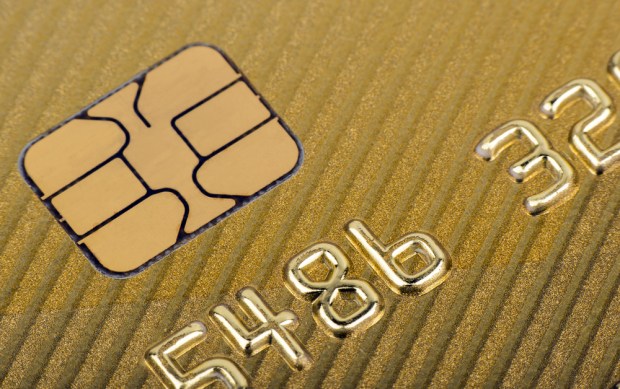Mastercard On EMV Nine-Plus Months In

More chip cards. More EMV terminals.
A few weeks ago, Mastercard released its latest EMV data and revealed that 80 percent of its U.S. consumer credit cards are now enabled with chips, marking an 88-percent increase in chip card adoption since the Oct. 1, 2015 EMV liability shift.
Chiro Aikat, SVP of EMV Product delivery for Mastercard, called those stats “music to his ears” since, from his perch, it signifies a great deal of progress in a short amount of time.
Giving Credit Where It’s Due
A point that can easily be forgotten, Aikat pointed out, is that EMV is the biggest change in the way U.S. consumers have paid at merchants in the last 45 years.
Not only is the U.S. a large market, but also it’s very fragmented, with millions of merchant terminals and tens of thousands of banks – especially compared to other parts of the world where EMV has been introduced.
EMV usage and adoption, Aikat said, over the last nine months has reached what Aikat described as significant, especially considering some markets took as much as five to six years to hit the EMV “tipping point.”
And that, Aikat said, calls for a little perspective.
“There’s a lot of noise in the system. We as an industry sometimes need to take a step back and think about the growth rate we are seeing nine months into the liability shift for one of the most complex and largest markets to migrate, this is some great progress,” Aikat said. “We are on the right track.”
Mastercard’s data shows a 25 percent month-over-month growth rate for the number of chip transactions happening in the U.S., which Aikat explained is very indicative of what’s being seen in the market.
Not only are more people receiving and using chip cards, but more merchants are getting chip enabled terminals up and running. There are now 1.7 million chip-active merchant locations in Mastercard’s network, which makes up approximately 30 percent of the total merchant population in the U.S. Aikat said that there’s also been a 374-percent spike in chip terminal adoption among Mastercard network merchants since last October.
He also believes that it’s possible that 50 percent of all merchant locations will be EMV-enabled by the end of the year.
Is Increased Security Worth The Wait?
Aikat also emphasized that EMV is doing exactly what it was designed to do: reducing fraud at the point of sale.
At Mastercard’s top 5 EMV-enabled merchants, counterfeit card fraud is down over 60 percent since the liability shift, which Aikat said is another proof point that the technology is working.
But despite this, much of the attention when it comes to EMV is focused on the longer transaction times at the checkout.
It’s true – dipping takes longer than swiping.
And now that much of the industry is over the hurdle of implementation, the focus has shifted to optimizing the technology to provide a better (and faster) experience for consumers.
In some cases, merchants are speeding up EMV transactions on their own while others are leveraging the new standards provided by the networks like Mastercard’s M/Chip Fast solution or Visa’s Quick Chip for EMV.
“Our goal is not to say everybody needs to do M/Chip Fast,” Aikat explained, adding that instead the goal is to offer M/Chip Fast as one way of getting to an optimal consumer experience.
No matter which direction a merchant decides to take to get to faster EMV, he explained, the point is that the experience and the speed are getting better.
Aikat admitted that the adoption of M/Chip Fast by larger retailers is a bit slower, because many of them have already started working on their own optimization solutions. Merchants like Walgreens are actually doing a good job of speeding up EMV transactions for their customers, he added.
“Where you have merchants that are either in the process of implementation or may not have the infrastructure to truly optimize, that’s where you’ll see the adoption of M/Chip Fast and Quick Chip,” he explained.
“Versus some of the big retailers, who already started working on optimization — so they may never need it, and that’s perfectly fine with us.”
Tackling The Misconceptions
EMV hasn’t been faring so well in the media lately.
As Karen Webster pointed out in her recent column, there’s been a lot of piling on EMV and the resulting confusion its brought to the consumer experience at the point of sale in the U.S.
Though the reports of inconsistencies may be true – it’s bound to happen when one of the biggest card markets in the world transitions to a new card standard – all hope is certainly not lost.
But Aikat also says one huge misconception seems to prevail: that because EMV can create an awkward consumer experience, shifting all payments to mobile is what we need to do. Mobile-only payments might sound great to some, but plastic cards are ubiquitous and consumers like and use them.
“This whole notion that we should trump one medium over the other is not right, it’s a consumer choice and our goal is to make payments feasible in any medium that the consumer wants and make sure it’s secure,” Aikat emphasized. “EMV allows that to happen.”
After all, merchants still take cash, some 3,000 years after its introduction.
